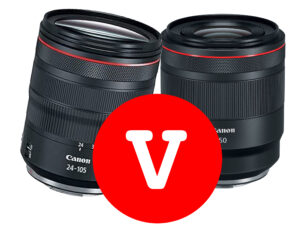In the ever-evolving battlefield of photography, Fujifilm has taken a leaf out of Sun Tzu’s strategic playbook with the maxim, “fight the enemy where they are not.” This ancient wisdom perfectly encapsulates Fujifilm’s approach to competing in the digital camera market against full-frame giants like Canon, Sony, and Nikon. By focusing on their strengths with their APS-C and medium format cameras, Fujifilm has not only survived but thrived by avoiding direct confrontation in the fiercely contested full-frame arena.

Fujifilm’s decision to double down on its APS-C X Series and medium format GFX Series cameras highlights a strategic divergence from the industry’s full-frame fixation. Many believe that the ultimate measure of a camera’s quality is its sensor size, with full frame often seen as the gold standard. However, Fujifilm’s success challenges this notion, demonstrating that the heart of photographic excellence lies in the synergy between the camera body and, more crucially, the lens.


When comparing image quality, many photographers discover that APS-C cameras, like Fujifilm’s X Series, can produce images that rival those of full-frame cameras, especially when paired with high-quality lenses.

The difference in sharpness and quality becomes negligible, particularly in controlled conditions. It’s in challenging lighting scenarios where full-frame sensors exhibit advantages, such as better dynamic range allowing for more detailed exposures in both shadows and highlights. Yet, Fujifilm’s APS-C cameras excel in compactness and portability, making them ideal for a wide range of photographic applications, from street photography to travel.
There is no doubt the image, clarity and colour quality a Fuji APS-C camera is capable of.
Moreover, the misconception that professional status is conferred by the size of one’s camera sensor is rapidly fading.

Clients are increasingly recognizing the value of creativity and skill over the equipment used. Fujifilm has leveraged this shift in perception, focusing on delivering exceptional image quality and innovative features within the more compact APS-C format and the high-resolution realm of medium format.



Fujifilm’s foray into medium format with its GFX Series has been nothing short of revolutionary. By making medium format more accessible and versatile, Fujifilm has positioned its GFX cameras as formidable competitors to traditional full-frame models. The GFX 100 II, for example, boasts a 102-megapixel BSI CMOS sensor that offers unparalleled detail and dynamic range, challenging the notion that full frame is the apex of image quality.

The GFX Series not only excels in image quality but also narrows the performance gap with full-frame cameras in areas like autofocus, burst speed, and lens selection. Fujifilm has significantly expanded its lens lineup, introducing a variety of lenses that cater to a wide range of photographic genres. This expansion, coupled with advancements in autofocus and in-body image stabilization, has made medium format cameras more versatile and suitable for a broader array of photographic tasks, from portrait and event photography to action and wildlife.

Fujifilm’s strategic decision to bypass the crowded full-frame market has allowed it to carve out a unique niche, offering photographers the advantages of medium format and APS-C cameras without the need to directly compete with full-frame models. This approach aligns with Sun Tzu’s wisdom, as Fujifilm has effectively competed by creating a “blue ocean” of opportunity, where it can dominate without engaging in a direct conflict with established full-frame manufacturers.
In essence, Fujifilm’s success story is a testament to the power of strategic differentiation and innovation. By focusing on the strengths of APS-C and medium format cameras, Fujifilm has not only provided photographers with high-quality alternatives to full frame but has also redefined what it means to be competitive in the digital camera market. Just as Netflix revolutionised the way we consume media, Fujifilm is reshaping the landscape of photography, proving that the art of war in the digital age is not about confronting your opponents head-on but about outmanoeuvring them where they least expect.








































































